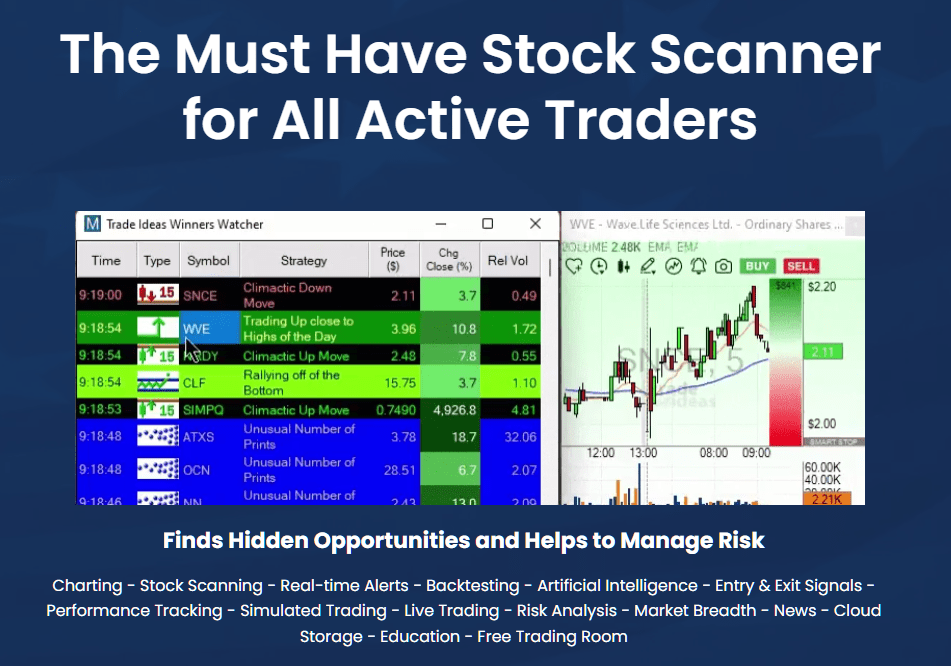Top 10 Ways To Evaluate The Price And Cost Of Ai Trading Platforms For Stock
Assessing the cost and pricing of AI software for predicting and analyzing stocks is crucial to ensure you are getting the most value from your investment while avoiding hidden fees or unexpected costs. Understanding the price structure is essential to make an informed decision. Below are the top 10 suggestions to evaluate the price and costs of these platforms:
1. Understanding the Pricing Model
Subscription-based: Find out whether the platform has either a monthly or an annual cost and what features are available on each level.
Pay-per-use : Make sure that the platform’s charges are based on the amount of usage (e.g. transactions, requests for information, or forecasts).
Freemium Model: Check to see if the website offers a free version that offers only a few options. The premium features are paid for.
2. Compare Pricing Tiers
Features breakdown: Check out the features included in each price tier (e.g., basic, professional, enterprise).
Scalability – Make sure your pricing tiers are compatible with your requirements.
Upgrade flexibility: Find out whether you are able to easily change or upgrade your plan as your needs alter.
3. Evaluate Hidden Costs
Data fees: Find out whether the platform is charging extra for access to premium data (e.g., real-time data and advanced analytics).
Brokerage fees: Verify if there are any additional costs for the platform to be integrated with brokers or execute trades.
API usage: Check whether there are additional costs for API access or high-frequency API usage.
4. Demos and Free Trials
Trial period: Look for platforms which offer a demo or free trial to let you check out the features before deciding to make a decision to commit.
Be sure to check the limitations of the trial offer. It may not include all the features.
If the platform is not right for you, make sure you can remove the trial.
5. Look for discounts and promotions.
Discounts for annual plans: See for discounts that the platform offers compared to their monthly plans.
Referral programs: See whether the platform offers discounts or credits for referring other users.
Bulk or Institutional Pricing If your company is a large one then you might want to inquire about bulk or institutional pricing.
6. Calculate the Return on investment
Cost and. worth: Determine if the platform’s features and forecasts justifies the cost. For example, does it aid you in making better trading decisions or reduce time?
Research the platform’s success rate or testimonials from users to determine its potential ROI.
Alternative costs Costs of the platform: Compare its cost against the possible cost of not using it (e.g. missed opportunities, analysis time manually).
Review Policies on Cancellation and Refunds
Cancellation policy: Make sure that you have the ability to cancel the subscription without penalty or costs.
Refund policy Find out what the policy is for refunds. you for any unused portions.
Auto-renewal. Find out if the platform will automatically renew your subscription. If so, you’ll need to know how to unsubscribe.
8. Review Transparency of Pricing
Clear pricing page – Make sure there are no hidden fees on the pricing page.
Customer Support If you have any questions about pricing details and additional costs, contact customer service.
Contract Terms: Understand the commitments and penalties over the long term by reading the contract’s clauses.
9. Compare yourself to your competition
Comparing features and prices between platforms is a great way to make sure you’re getting a good deal.
User reviews: Read feedback from users and see whether other users agree that this platform is worth it.
Market positioning: Find out if it is priced at a high-end, mid-range, or low-cost option and if it is in line with what you expect.
10. Calculate the Long-Term Costs
Price hikes: Check out the past history of the platform and see how frequently it increases prices.
Features added – Find out if new features come with your current plan or if an upgrade is required.
Costs of scaling: Make sure the platform’s price remains affordable in the event that your trading activities or data requirements grow.
Bonus Tips
Try a variety of platforms. Test the capabilities and benefits of various platforms by testing the platforms during trial periods for free.
Offer prices to negotiate: If you have a large number of customers or are part of an organization, request special pricing and discounts.
There are free educational tools on various platforms.
Utilize these suggestions and you’ll be able to evaluate the price, cost, and the features offered by AI platform for trading stocks. A well-priced trading platform will find the perfect equilibrium between affordability and features that will allow you to achieve the best results. View the top best stocks to invest in blog for website info including ai stock trader, best ai copyright, best ai stocks, best ai copyright trading bot, ai trade, ai investment stock, ai stock prediction, ai for stock trading, ai investing tools, best stock analysis app and more.

Top 10 Tips For Evaluating The Authenticity Of Ai Trading Platforms Which Predict Or Analyze Stock Prices
Transparency plays an important role in assessing AI-driven trading and platform for stock predictions. Transparency is important because it allows users to trust the platform, understand the decisions made and verify the accuracy. Here are 10 tips on how to assess the authenticity of platforms.
1. The AI Models are explained in simple terms
TIP: Ensure that the platform offers a clear explanation of the AI models and algorithms used to predict.
Why: Users can more accurately assess the validity and limitations of a system by understanding its underlying technology.
2. Sources of Disclosure for Data
Tip: Check if the platform makes public its data sources (e.g. historic stock data, social media).
Why: Knowing data sources can help ensure that the platform is using precise and complete information.
3. Performance Metrics, Backtesting, and Results
Tips Look for reports that are transparent of performance metrics.
This is to allow users to evaluate the performance of their previous platforms with those on the current platform.
4. Updates in Real Time and Notifications
Tip. Find out if your platform can provide real-time information and alerts regarding trades or changes in the system, such as trading forecasts.
The reason is that real-time visibility means that users are always aware of critical actions.
5. Transparent Communication on Limitations
TIP: Make sure that the platform discusses its risks and limitations with regard to trading strategies and forecasts.
What’s the reason? Acknowledging limitations builds trust and helps users make better decisions.
6. Raw Data is Available to Users
Tips: Find out if the AI model is able to gain access to raw data, intermediate results or both.
Why: Raw data is a great way to validate the predictions of others and to conduct an analysis.
7. Transparency in charges and fees
Make sure the platform clearly lists all fees for subscriptions and any other hidden costs.
Reason: Transparent pricing helps avoid unexpected costs and builds confidence.
8. Regularly scheduled reporting and audits
Check if a platform produces regular reports and is subject to third-party audits to check the efficiency of its operations.
Independent verification is important because it enhances the credibility of the process and ensures accountability.
9. The logical explanation of predictions
Tip : Look for information about how the platform generates predictions or specific recommendations (e.g. features importance, decision trees).
Explainability is a software that aids users in understanding AI-driven decision making.
10. User Feedback and Support Channels
Tip. Find out if there are channels to provide feedback from users, support, and transparency in responding to users’ concerns.
What is the reason? It shows a commitment for openness and the satisfaction of users.
Bonus Tip: Regulatory Compliance
Make sure the platform is compliant with all financial regulations. It should also disclose the status of its compliance. This provides an additional layer of credibility and transparency.
Through analyzing these functions, you can decide whether or not the AI trading platform and predictions of stocks are reliable. It will then be able to make well-informed decisions and gain confidence in its capabilities. Follow the recommended ai for trading for blog advice including ai for stock trading, ai stock predictions, ai stock market, ai stock prediction, copyright ai bot, ai for trading, best ai stocks to buy now, best ai stocks, stock market ai, ai for trading and more.

